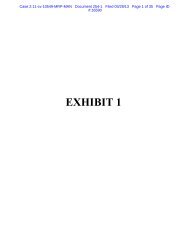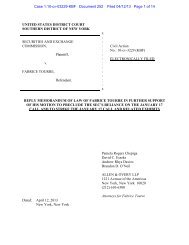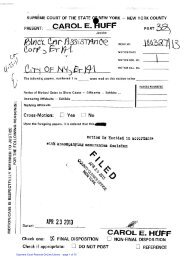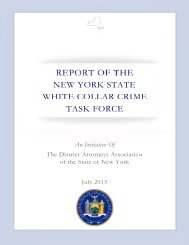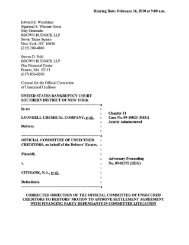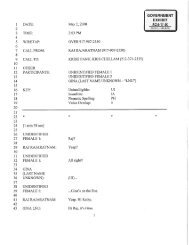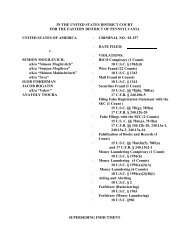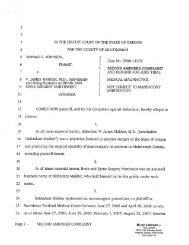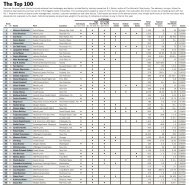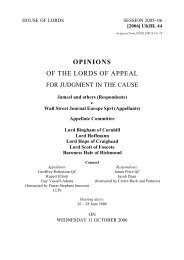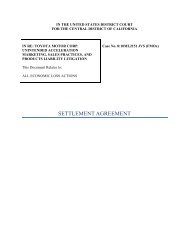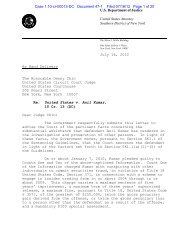Salz Review - Wall Street Journal
Salz Review - Wall Street Journal
Salz Review - Wall Street Journal
You also want an ePaper? Increase the reach of your titles
YUMPU automatically turns print PDFs into web optimized ePapers that Google loves.
105<br />
<strong>Salz</strong> <strong>Review</strong><br />
An Independent <strong>Review</strong> of Barclays’ Business Practices<br />
9.27 Greater non-executive engagement at a business unit level should also improve the<br />
Board’s ability to take a longer-term view of senior executive succession, building a<br />
picture of the potential of candidates one or two tiers below the Chief<br />
Executive level.<br />
9.28 Barclays’ directors did recognise the importance of investing time outside Board<br />
meetings to develop their understanding of the businesses and the people. However,<br />
the demands placed on Board time will have made this difficult to accommodate.<br />
9.29 Barclays has a continuing training programme for non-executives which, since 2010,<br />
has included detailed sessions on specific specialist topics, for instance, derivatives,<br />
risk-weighted assets, long-term incentive plans and conduct and operational risk.<br />
These continuing initiatives are important in assisting non-executives’ understanding<br />
of key issues so that they can participate confidently in Board discussions.<br />
9.30 We have considered examples of Board challenge in areas that have given rise to<br />
concern. This has been with the benefit of hindsight and, more importantly, without<br />
having been there at the time. Our judgments are therefore more illustrative of issues<br />
than definitive. There is a common view that Barclays’ management were at times<br />
inclined to focus too narrowly on whether a proposed action met the applicable<br />
rules, without exploring wider implications such as how that decision might look to<br />
shareholders, customers, regulators and the public. In some cases this has resulted in<br />
reputational damage – and a loss of ‘reputational resilience’. The Protium transaction<br />
is an example of a decision where considerable care was taken, including by members<br />
of the Board, as to compliance with relevant accounting rules. This was not a<br />
straightforward decision and much non-executive time was given to it, including as<br />
to reputational aspects. Nevertheless, with hindsight, the Board did not anticipate the<br />
degree of adverse reaction and scepticism that resulted, taking undue reassurance<br />
from the absence of regulatory objection, which was itself quite nuanced.<br />
9.31 It also seems to us that at times the Board might have given greater challenge to<br />
management assurances, for example that issues were ‘industry issues’ or known to<br />
the regulators. Such assurances were no doubt given in good faith – but they did not<br />
always turn out to be a reasonable basis for not taking more urgent action. This<br />
would seem to be the case on PPI, which, although both an industry problem and<br />
known to regulators, seems to have taken too long to be fully confronted.<br />
9.32 Another test of the Board’s effectiveness is how management responds to Board<br />
guidance. In one instance we reviewed, involving a serious breach of a limit in the<br />
investment bank, Board members thought they had sent a clear message to<br />
management that the seriousness of the matter required disciplinary consequences.<br />
In the event, the Board’s expectations were not fully met, although the Board did<br />
initiate a process to check that there were no similar problems with limit<br />
adherence elsewhere.<br />
Time Expectations<br />
9.33 It is essential that non-executive directors’ expectations of the time they are required<br />
to spend are realistic. Otherwise there are risks that they will be unable to find the



